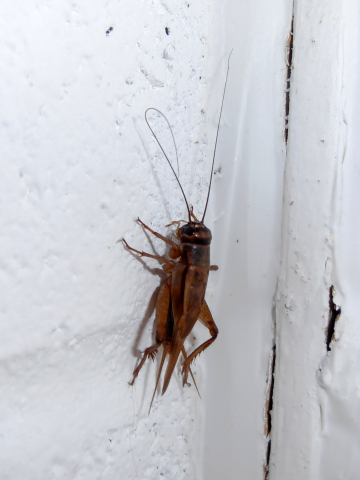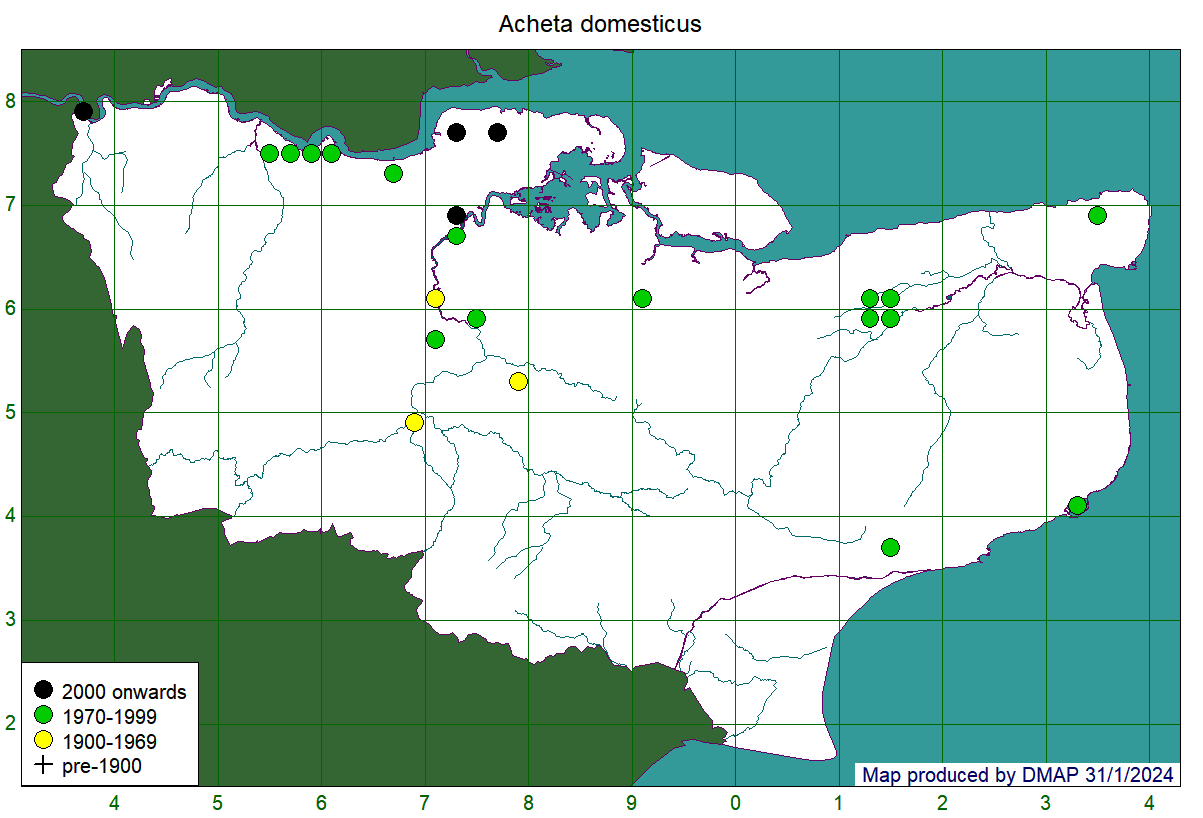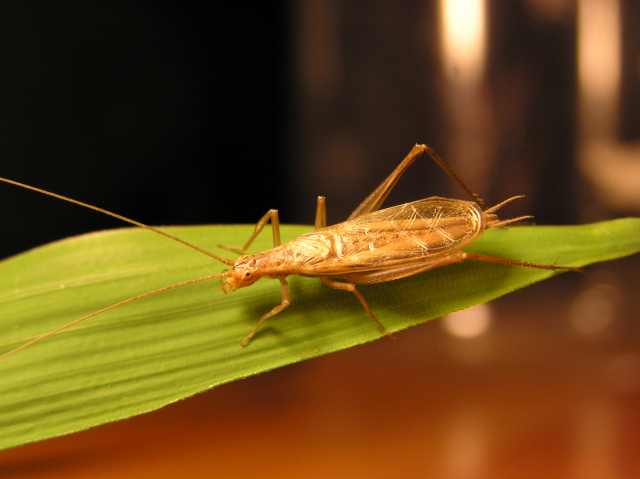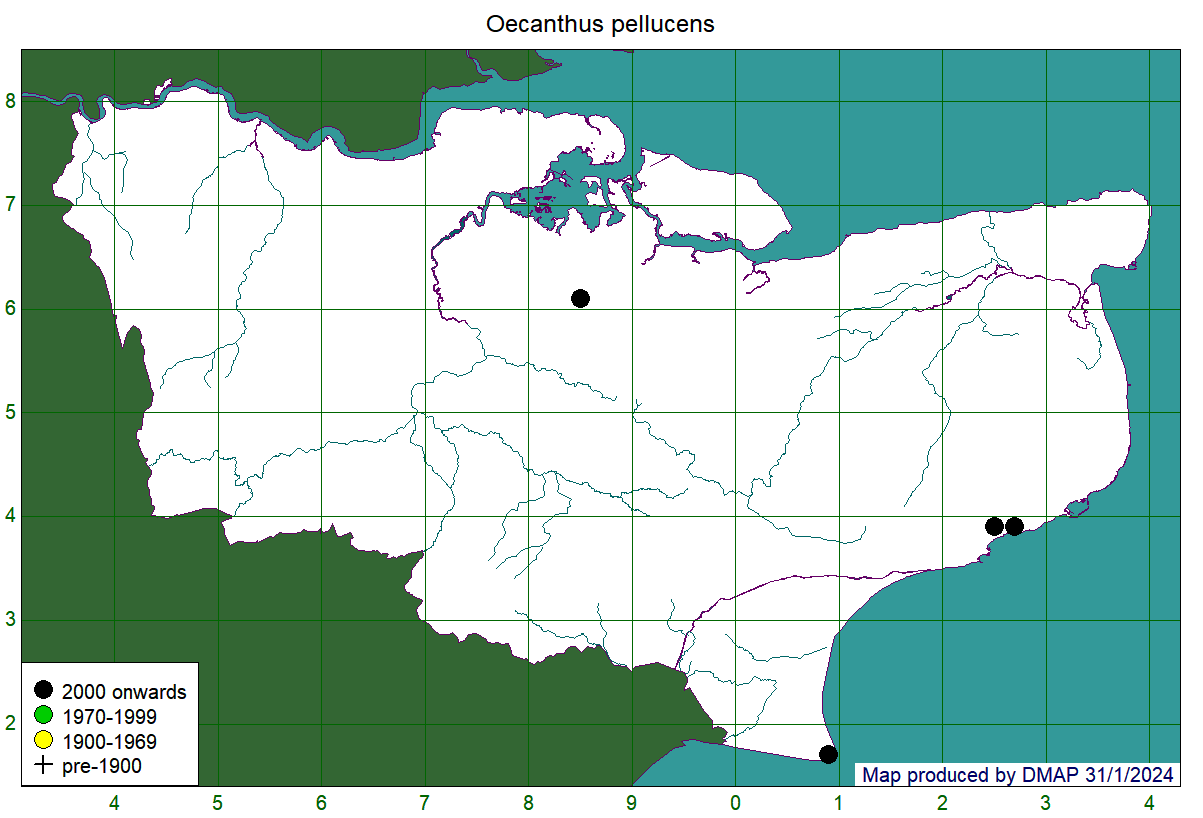House Cricket Acheta domesticus
House Cricket, male. Photo R I Moyse.
A true cricket, in the family Gryllidae, the House Cricket has this family's typically broad build and wide, rounded head. In Britain, it is a species associated with human habitation, needing warmth in winter and living on scavenged scraps. Once so common as to have been thought a domestic pest, it has declined substantially as a result of improved domestic and workplace hygiene. It still persists in rubbish (the photographed specimen probably came from the grounds of an adjacent skip company) and in dung heaps - I once heard its loud song in December, coming from a pile of dung which had been scraped from a cattle shed. Ted Benton, in his New Naturalist volume, expresses the view that most modern records are likely to be animals bred as food for captive reptiles (and it is worth noting that there are other, similar species bred for this purpose and which might be encountered as escapees).
Map showing records at tetrad (2km x 2km square) resolution. Colour of dot shows date-class of most recent record for that tetrad.
Tree Cricket Oecanthus pellucens
Tree Cricket, male. Photo R I Moyse.
A smallish and rather delicate member of the Gryllidae, best detected by the loud, trilling song produced in the evening and during the night. There appear to have been occasional records of individuals, the first in Kent being a male found singing in a hedgerow in Stockbury, between Maidstone and Sittingbourne. In 2015, a substantial colony was discovered in scrub and long grass at Dungeness, and this colony has persisted and may have started to spread. In 2022, Alfie Gay came across two singing males at Folkestone Warren, some 16 miles from the Dungeness colony; more were found nearby in 2023. Whether the individuals at Folkestone represent spread from Dungeness or a separate cross-channel colonisation event, it seems likely that Tree Crickets will be found at further locations along the coast in the near future.
Map showing records at tetrad (2km x 2km square) resolution. Colour of dot shows date-class of most recent record for that tetrad.




